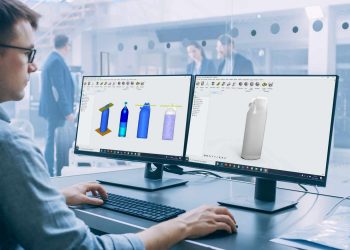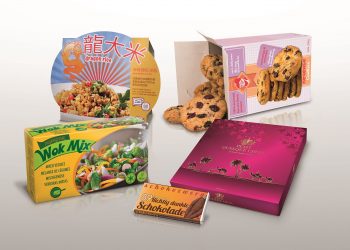There is absolutely perfect packaging all around us. All we have to do is open our eyes and see.
Nature has been in the business of packaging for 3.8 billion years and has truly perfected it. There is so much to observe, learn, imbibe and adapt. Everything that we see around us displays excellence in packaging: It can be the barks on trees, skins or shells on animals, peels on fruits or scales on fish.
Humans, as we evolved towards industrialisation, have moved more and more towards mass manufacturing and utilisation of substances with no clear end of life. Any industrial process uses three primary steps- Heat, Beat and Treat. We will find those as a common thread whether it is paper, plastics, textile, metals, chemicals or food products. All three steps are fundamentally energy consuming and generate waste.
Nature uses very few inputs for creation. Most packaging is fundamentally sugar, protein or mineral chains. The sun is the only source of energy and the rest of the input matter including moisture is taken from the soil.
Natural packaging always has a clear end of life. It becomes food matter for another organism in the chain. There is no material which is left out.

Nature packages beautifully. I am always amazed at the complexity of structures and beauty and balance in form. I am mesmerised to watch a fruit like a pomegranate- look at the intricacy of structure. It protects such delicate seeds within its folds and is so elegant to look at. We can think of various other stunning structures in both fruit and animal kingdoms.
We can never confuse an orange for a banana. You recognise the inside from the outside. There is no labelling needed- the shape and structure, density and weight all provide clarity through visual means. And it is not just the species, we can recognise within the species- no two products are the same. Nature is not homogeneous.

There is a clear indication of expiry date through multiple sensory means. Things start to rot and provide a visual and smell indicator. There is a change that occurs also to the feel of true substance. We do not need to put an expiry date it is quite evident on its very own.
It is stunning to learn about how the shapes and structures indicate the health benefit of certain products when consumed. The walnut is shaped like a brain, kidney beans like a kidney, tomatoes are red like blood etc. If we start to observe there are indicators that are clearly provided through form, colour or texture. An Ayurvedic doctor once asked me not to consume anything that broke into two equal halves as those foods tended to create more air and my body did not need the same at the point. This food group fundamentally contained nuts and pulses and it is interesting that nature provides clear structures that can indicate patterns.

Nature provides such a wonderful unpacking experience whenever needed. There is always a method to for the cover to come o?. Think of the ease with which we peel a banana or an orange, crack an egg,
split peas, separate garlic or debark a tree.
Nature has packaging solutions for all consistencies. We have various packaging examples for solids, liquids and gases. It is wonderful to watch how well coconuts protect the nectar inside and I was recently informed that most fish have special air sacks that hold the oxygen supply for them.
The packaging breathes. When we observe our own skins we notice how well it separates the insides from the outside. The insides do not pop out and it protects from the outside by being rather water proof and tough. While it provides such a wonderful barrier it continues to be alive and breathing.
The packaging carries life within. The seed provides continuity for development of the next stage. It is protected under layers while holding potential for life source within.

There is so much to learn from nature. We wonder how we can adapt more and more. How can we think about ways that influence our process and products?
The ultimate packaging will include all the stunning attributes that nature displays and consume minimal energy for its production.
The closest work I have seen is by our friends at Ecovative who produced various packaging forms through growing mycelium based structures. It is such amazing work and we hope that the e?orts that they have made transform the styrofoam alternates completely. There are so many wonderful aspects to the products- they use waste fibre, they utilise minimal energy and water, the products are grown and disintegrate and merge into nature when disposed.
The other wonderful direction is taken by Andras Forgacs for bacterial multiplication where he is making great e?ort to grow leather and meat through studying the way we make wine or yoghurt. We hope the same can be replicated by us taking other structures from nature.
Both Andras and Eben from Ecovative have wonderful TED talks I encourage you to watch.
There is much to be done and we are only getting started on the journey. We have to devote ourselves to finding the right inspirations and then learning from them to create substances that would truly prove beneficial for our planet.
I was telling a friend recently that our bag solution was about a year away and the flexible packaging alternate was three years away. He just answered in exasperation and told me ‘but the earth doesn’t have time!!!’. Thank you @Ridha, that has become a mantra for us and we repeat that in every interaction we have internally and with our partners.
Former Production Manager at ITC Limited (Packaging and Printing Division)
Mr. Partha Pratim Sanyal is a Printing & Packaging Consultant from Kolkata, India. He is associated with Printing & Packaging/ Conversion Industry since 1971 and was last employed in ITC Limited –Packaging and Printing Division as Production Manager for 30 years.
Currently engaged as Member-Printing Inks, Stationery & Allied Products Committee, Bureau of Indian Standards (BIS),Govt of India and Special Invitee Member, Executive Committee ,Indian Institute of Packaging(Kolkata Branch),Ministry of Commerce, Govt of India.
He is a Science Graduate from Calcutta University and a Qualified Printing Engineer from The Regional Institute of Printing Technology, Calcutta, India in 1976. Also completed Certificate Course in Operation Management for executives from XLRI, Jamshedpur in 1996.






